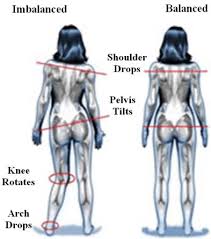
Healing Hands Chiropractic : Top 3 reasons for Posture Imbalances and How to Improve them
Posture imbalances, from a chiropractic perspective, occur when the body’s alignment is disrupted, affecting biomechanics and leading to muscle strain, joint dysfunction, and potential pain or injury. Chiropractors are well-equipped to diagnose and address these imbalances through observation, palpation, and functional movement assessments. They use adjustments, soft tissue therapy, and corrective exercises to restore proper alignment and improve overall function
1. Sleeping Posture
Improper sleeping posture is a common cause of spinal misalignment. For example, sleeping on your stomach can twist the neck and strain the spine, leading to discomfort and misalignment. This can affect spinal curvature, contributing to headaches, neck pain, and lower back issues over time.
Improving sleeping posture
Tip: Try sleeping on your back or side. In either of these sleep positions, it’s easier to keep your spine supported and balanced and maintain the natural curve of the spine, which relieves pressure on the spine and enables your muscles to relax and recover. If you sleep on your side, putting a pillow between your knees can keep your hips aligned. If you’re a back sleeper, use a pillow that supports your neck’s natural curve, not one that pushes your head forward.
Chiropractic Help: Chiropractors can evaluate your spinal alignment and recommend ergonomic pillows or adjustments based on your body size and shape to promote better spinal health during sleep. Regular chiropractic adjustments can also help with any stiffness or misalignment that has resulted from poor sleep posture.
2. Crossing Legs
Frequently crossing your legs can lead to an imbalance in your hips and pelvis. This posture can cause the pelvis to rotate, putting uneven pressure on one side of the lower back. Over time, this can lead to muscle imbalances, restricted movement, and even pain. It also affects the alignment of the spine, potentially causing discomfort in the sacroiliac joint (where the spine meets the pelvis).
Improving Leg Crossing Habits
Sitting Tip: Avoid crossing your legs for long periods. Instead, try to keep both feet flat on the floor with your knees at a 90-degree angle. If you sit for long hours, take breaks to stand or walk around to prevent tightness or imbalances.
Chiropractic Help: A chiropractor can assess any imbalances in your pelvis or lower back caused by this habit and perform spinal adjustments to correct them. They might also suggest stretches or exercises to improve hip mobility and alignment.
3. Carrying a Bag
Carrying a bag, especially one that’s heavy or carried on one shoulder, shifts the body’s center of gravity and creates an uneven load. This imbalance forces one side of the body to compensate, leading to shoulder imbalances, neck pain, and spinal misalignment. Over time, this can cause muscle fatigue, tension, and increased risk of injury to the back or shoulders.
Improving Bag Carrying Habits
Tip: Use a backpack with two straps to distribute the weight evenly across both shoulders. If you must carry a bag on one side, switch sides regularly to avoid creating a one-sided load. Ensure the straps are adjustable so the bag sits at waist level for better support
Chiropractic Help: Chiropractors can perform adjustments to realign your spine and pelvis if carrying a heavy bag has caused imbalances or discomfort. They can also recommend posture exercises and stretches based on your body condition to strengthen the muscles that support your spine, particularly in the shoulders, neck, and back.












